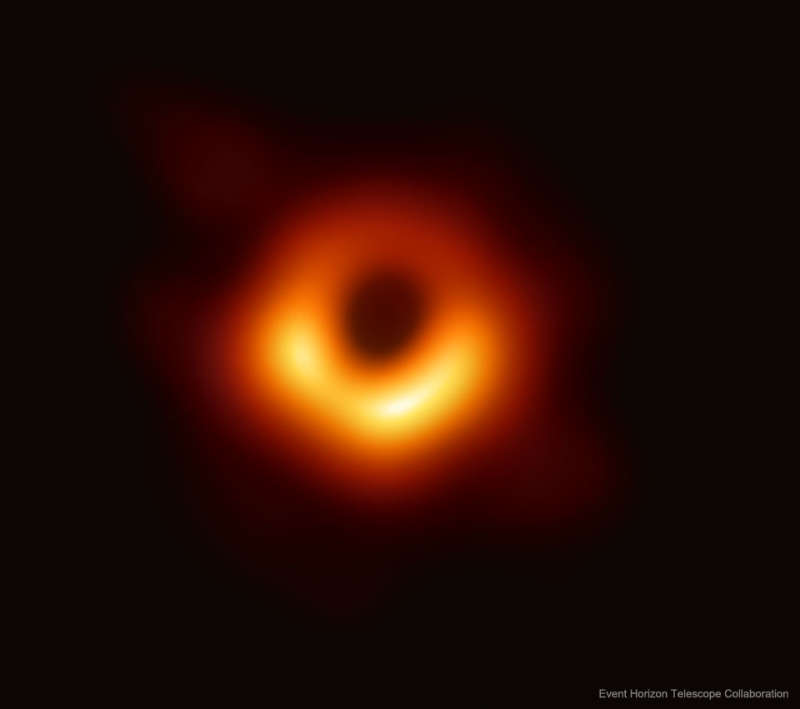
|
Credit & Copyright: Event Horizon Telescope
Collaboration
Explanation:
What does a black hole look like?
To find out,
radio telescopes from
around
the Earth coordinated observations of
black holes with the largest known
event horizons on the sky.
Alone, black holes are just
black,
but these monster attractors are known to be surrounded by glowing gas.
The first image was released yesterday and
resolved the area around the
black hole at the center of
galaxy M87
on a scale below that expected for its
event
horizon.
Pictured, the dark central region is not the event horizon, but rather the
black hole's shadow -- the central region of
emitting gas darkened by the central black hole's gravity.
The size and shape of the shadow is determined by bright gas
near the event horizon,
by strong
gravitational lensing deflections, and by the black hole's spin.
In resolving
this black hole's shadow, the
Event Horizon Telescope (ETH)
bolstered evidence that
Einstein's gravity works even in
extreme regions,
and gave clear evidence that
M87
has a central spinning black hole of about 6 billion solar masses.
The EHT is not done -- future observations
will be geared toward even
higher resolution,
better tracking of variability, and exploring the immediate vicinity of the
black hole in
the center of our
Milky Way Galaxy.
|
January February March April May June July August September October November December |
| ||||||||||||||||||||||||||||||||||||||||||||||||
NASA Web Site Statements, Warnings, and Disclaimers
NASA Official: Jay Norris. Specific rights apply.
A service of: LHEA at NASA / GSFC
& Michigan Tech. U.
Based on Astronomy Picture
Of the Day
Publications with keywords: black hole
Publications with words: black hole
See also:
- APOD: 2025 September 24 Á GW250114: Rotating Black Holes Collide
- APOD: 2025 May 9 Á IXPE Explores a Black Hole Jet
- APOD: 2025 May 6 Á The Doubly Warped World of Binary Black Holes
- APOD: 2025 May 4 Á Spin up of a Supermassive Black Hole
- APOD: 2024 November 24 Á Journey to the Center of the Galaxy
- APOD: 2024 October 1 Á Porphyrion: The Longest Known Black Hole Jets
- APOD: 2024 June 16 Á Animation: Black Hole Destroys Star
